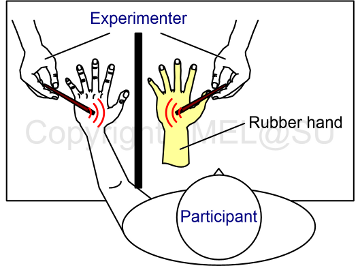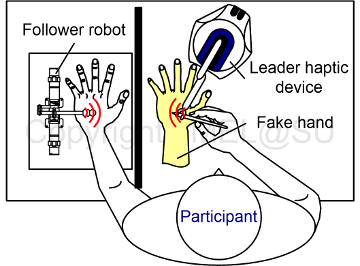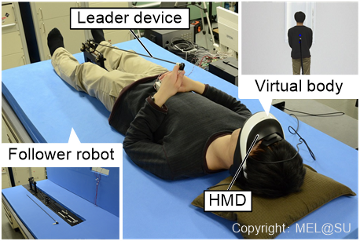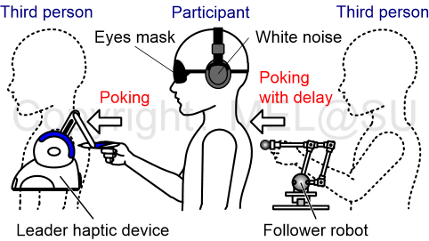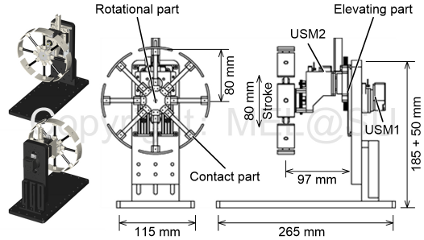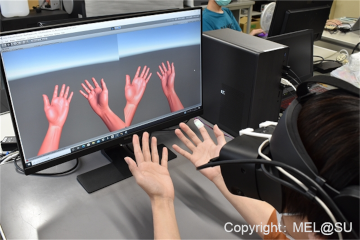In MEL, we are developing novel systems that allow to "smartly confuse human body perception or brain" by using robotics, haptics, and XR technologies. Using the systems, we are peforming various multidiciprenary studies between enginerring, cognitive neuroscience, exprimental psychology, and physical therapy (i.e., cognetics studies) to further understand the underlying mechanism of human body perception. In addition, since MEL is belonging to the mechanical engineering department, we are also (a little bit) studying on mechatoronics technologies. Here, we introduce some of our ongoing/previous studies.
What is "cognetics"?
Under construction.
Quoted from an original paper ofcognetics
"Cognetics joins the cognitive neuroscience of bodily awareness with
robotics to study, control, and enhance perception, cognition, and consciousness.
We highlight robot-controlled bodily perception, conscious states, and
social interactions and sketch how future cognetic interfaces will impact
cognitive neuroscience and human enhancement."
O. Blanke and G. Rognini, "Cognetics: Robotic Interfaces for the Conscious Mind," Trends in Cognitive Neuroscience, Vol. 20, No. 3, pp. 162–164, 2016. DOI: 10.1016/j.tics.2015.12.002
